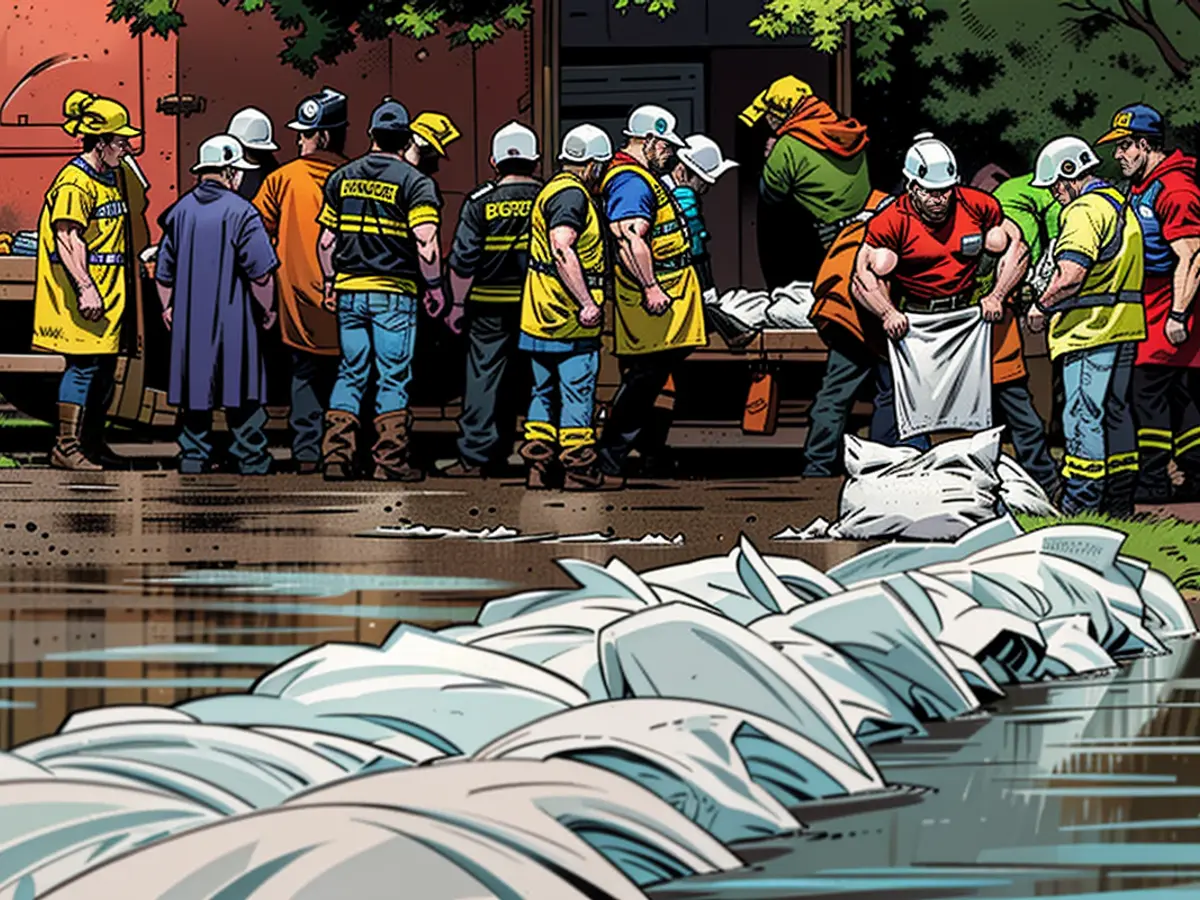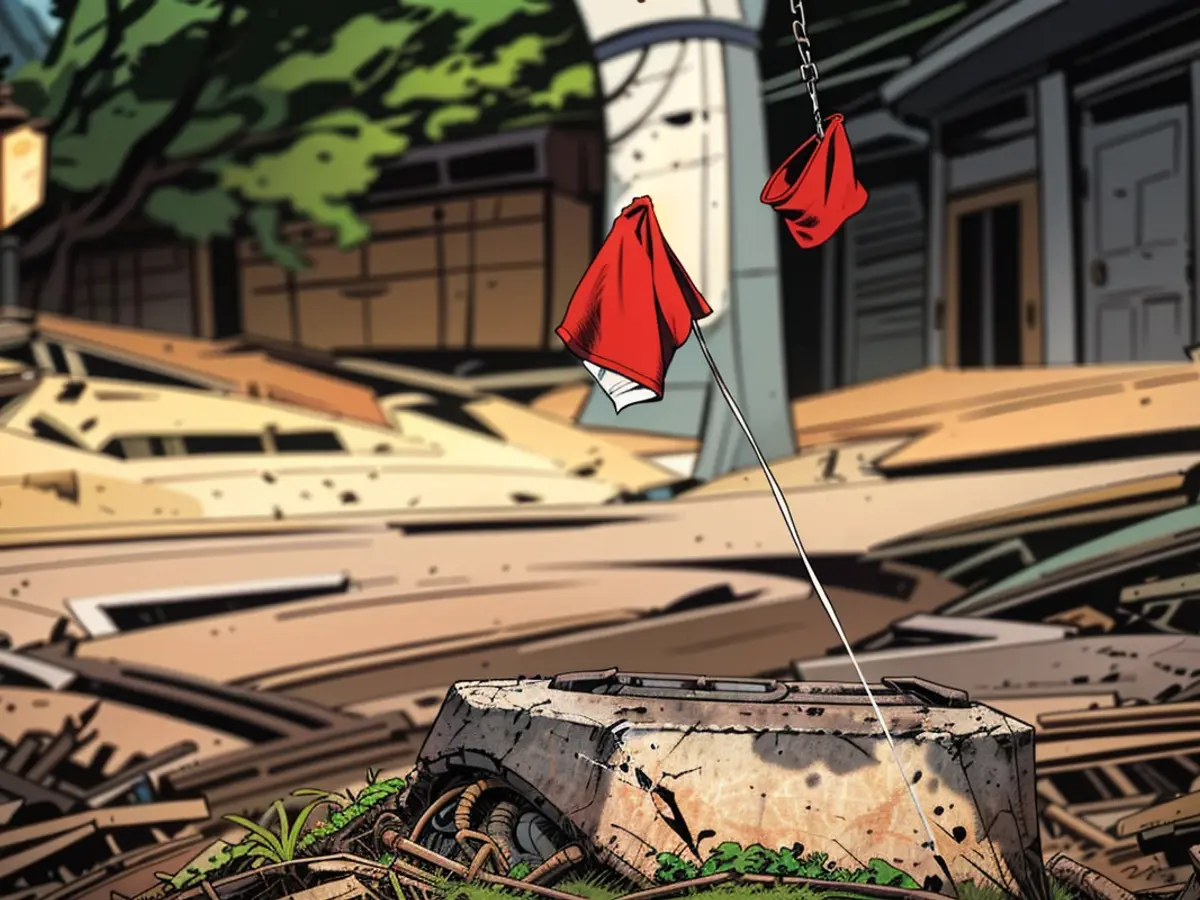La Bavière et la Saxe se préparent à l'imminence des inondations.
La gravité de la situation est indéniable. Des inondations catastrophiques causent des ravages et des pannes de courant en République tchèque, entraînant l'évacuation de deux villages en Pologne. La Bavière et la Saxe se préparent au pire, tandis que l'Autriche s'attend à des inondations sur le Danube similaires à celles il y a 30 ans.
Passau, en Bavière, devrait voir la fermeture de son vieux quartier plus tard dans la soirée, comme annoncé par la ville. Les équipes de réponse d'urgence préparent actuellement les mesures nécessaires et construisent des barrières de sacs de sable. Selon le service d'information sur les inondations de Bavière, le niveau du Danube à Passau était de 6,35 mètres à 9 heures ce matin, mais il est descendu à moins de 5 mètres jeudi soir. Malgré la plupart des précipitations du week-end en Bavière ayant déjà eu lieu, les effets sur les rivières ne se manifesteront qu'à plusieurs heures ou jours.
Le niveau de la rivière Inn à Marienbrücke était de 4,30 mètres ce matin, ayant chuté d'environ 2,50 mètres jeudi soir. À Passau, les rivières Danube, Inn et Ilz convergent. Les niveaux maximaux sont attendus dimanche vers 7 heures, avec des niveaux de Danube attendus de 7,89 mètres à Passau et de 5,48 mètres pour l'Inn à Marienbrücke. Cela pourrait presque dépasser l'alerte de niveau 3, entraînant potentiellement des inondations dans les zones construites ou des sous-sols inondés.
La Saxe orientale se prépare également aux inondations, avec l'alerte de niveau 1 qui pourrait être atteinte dès ce soir au Pegel Schöna, le plus bas des quatre niveaux d'alerte. Pour Dresde, cela est prévu pour dimanche matin, comme rapporté par le centre d'alerte des inondations de Saxe dans un message d'alerte. Les niveaux d'eau les plus élevés sur les jauges de l'Elbe en Saxe sont attendus mercredi et jeudi de la semaine prochaine.
"Le temps presse"
Given this timeline, urgent actions are being taken in the demolition of the collapsed part of the Dresden Carolabridge. "Time is ticking," stated fire department spokesman Michael Klahre on Friday evening. By Sunday, alarm stage 1 will be reached in Dresden. By Wednesday, stage 3 could be reached, with the Elbe's water level potentially rising to six to seven meters, while normal levels are just two meters.
Round-the-clock efforts are currently underway to clear the debris, aiming to clear the entire area of bridge section C, except for the section that collapsed into the river early on Wednesday morning, to prevent further damage from the impending flood. The estimated completion time is Sunday evening.
Flooding poses a risk in that area due to the heavy rain. The Elbe's swelling is a result of heavy rainfall in the catchment areas of the Elbe and Moldau in the Czech Republic.
Heavy rain in the Czech Republic
In Poland and the Czech Republic, Germany's eastern neighbors, flooding has already occurred following prolonged rain overnight. Approximately 20 rivers and streams have been issued the third flood alarm stage "Threatened", as reported by the news agency CTK. Elsewhere, sudden heavy rain has resulted in flooding. Czech television published 10 videos from Mikulovice near the Polish border, showcasing floodwaters overwhelming houses, garages, and streets early in the morning. "The water flowed down from the surrounding fields into the village," it was reported. Despite the fire department's offer of shelter in the local gym, no residents have taken up the offer so far.
60,000 households in the Czech Republic are currently without power, as reported by the CTK news agency in collaboration with energy providers. The administrative region around Ústí nad Labem (Aussig an der Elbe) in the northwest of the country, near the border with Saxony, is the most affected, with over 20,000 households temporarily without electricity. Storm damage, including falling trees onto power lines, has been cited as the cause. Rail traffic has also been disrupted, with trees blocking several lines.
Since Friday evening, firefighters in South Bohemian Budweis (České Budějovice) have been building flood defenses, loading sandbags at the Maltsch River and erecting a prefabricated barrier on the Vltava River bank. Metrologists forecast that river levels in the Czech Republic will continue to rise over the weekend, with some areas already receiving 50 to 110 liters per square meter since Friday.
Two villages in Poland evacuated
The situation in southwestern Poland is likewise precarious. The Biała Glucholaska river has flooded in the Opole region, forcing the evacuation of 400 residents from the village of Glucholazy near the Czech border. Interior Minister Tomasz Sikorski visited the site and shared rescue operation photos on X. Part of the residents of the village of Morów also had to be evacuated due to flooding from the Mora river. In total, firefighters carried out 400 operations in the region.
The Meteorological Institute is still anticipating continued rainfall. The alarm level has already been surpassed at 35 water measurement stations, the institute reported on X.
Alarm also in Austria
Unfortunately, the situation in Austria is also deteriorating due to persistent heavy rain. Klaus Stebal, the spokesman for the regional command, stated that the situation has "intensified" in Lower Austria, according to the Austrian news agency APA on Monday morning. Firefighters have been deployed to 160 operations since Friday evening, mostly due to storm damage. In Vienna, firefighters had to address 150 operations within the past 24 hours, mainly due to flooded cellars and broken branches.
Des inondations anticipées d'environ 30 ans sur le Danube et jusqu'à un siècle sur la rivière Kamp sont à l'horizon, selon le rapport de l'APA. Certains municipes ont entamé des évacuations préliminaires vendredi soir, touchant principalement les communautés agricoles ou les maisons de vacances. Des barrières de inondation temporaires ont été érigées dans plusieurs villes, notamment dans la région de Wachau.
"La situation va empirer le long de la Kamp", a déclaré Stebal. Deux trains de réponse aux catastrophes ont été mobilisés, y compris une mission pour protéger une sous-station électrique. La rivière a déjà débordé dans les quartiers bas, entraînant la fermeture des routes. Selon Stebal, le pic du niveau d'eau est prévu principalement pendant la nuit de lundi.
L'Union européenne a exprimé sa préoccupation quant aux inondations catastrophiques dans plusieurs pays, notamment la République tchèque et l'Autriche. Le centre de coordination des secours d'urgence de la Commission européenne suit de près la situation et se tient prêt à apporter une aide si nécessaire.
Une réunion de haut niveau a été convoquée par la Commission européenne pour discuter de l'impact de ces inondations sur les pays touchés et pour coordonner une réponse commune. Le Fonds européen de solidarité pourrait potentiellement fournir une aide financière pour aider à la reconstruction et à la relance.








